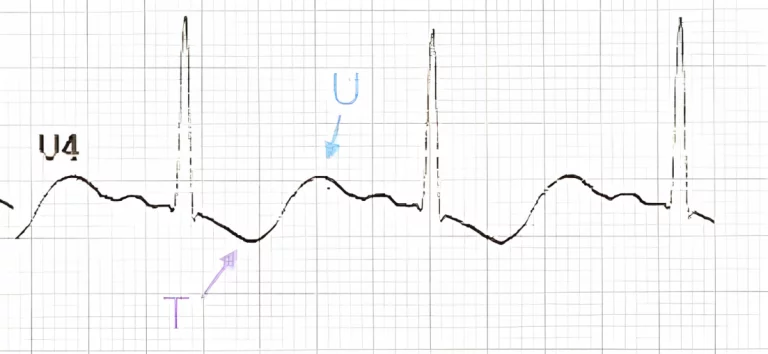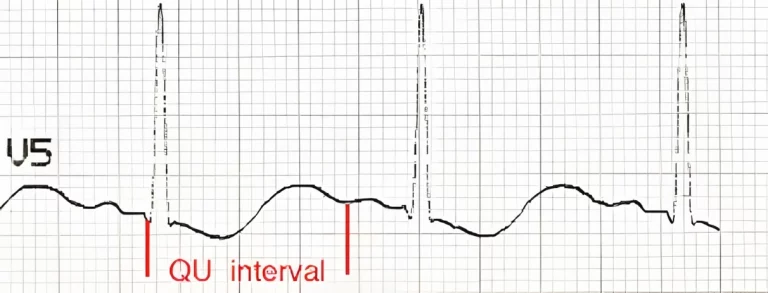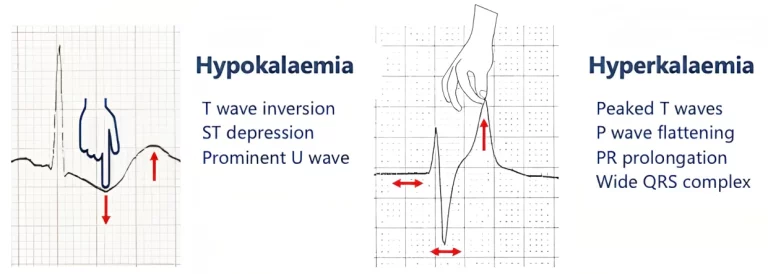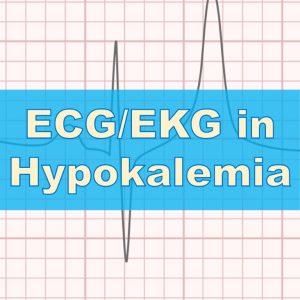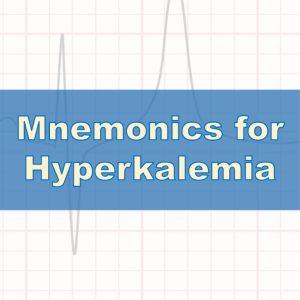Newsletter ABC in Nursing – Assessment & Priority ABC in...
Read More- Newsletter
Hypokalemia ECG/EKG
Hypokalemia ECG/EKG changes (K < 2.7 mmol/L)
Hypokalaemia is defined as a serum potassium level of < 3.5 mmol/L. ECG changes typically do not appear until a moderate level of hypokalaemia (2.5-2.9 mmol/L) has been reached. Decreased T wave amplitude is the first sign of hypokalaemia on the ECG.
Pathophysiology
Potassium is important for regulating the normal electrical activity of the heart. Reduces extracellular potassium causes myocardial hyperexcitability with the potential to develop re-entrant arrhythmias.
5 key ECG features of hypokalaemia (K < 2.7 mmol/L)
• Increased P wave amplitude
• Prolongation of PR interval
• Widespread ST depression and T wave flattening/inversion
• Prominent U waves (best seen in the precordial leads V2-V3)
• Apparent long QT interval due to fusion of T and U waves (= long QU interval)
With worsening Hypokalaemia…
• Frequent supraventricular and ventricular ectopics
• Supraventricular tachyarrhythmias: AF, atrial flutter, atrial tachycardia
• Potential to develop life-threatening ventricular arrhythmias, e.g. VT, VF and Torsades de Pointes
The push-pull effect
Hypokalaemia creates the illusion that the T wave is “pushed down”, with resultant T-wave flattening/inversion, ST depression, and prominent U waves
In hyperkalaemia, the T wave is “pulled upwards”, creating tall “tented” T waves, and stretching the remainder of the ECG to cause P wave flattening, PR prolongation, and QRS widening










Hypocalcemia Mnemonic
Newsletter Hypocalcemia Mnemonic Mnemonics in Hypocalcemia It can be a...
Read MoreHyperkalemia Mnemonic
Newsletter Hyperkalemia Mnemonic Mnemonic for Hyperkalemia It can be a...
Read MoreCauses of Hyperkalemia
Newsletter Remembering Hyperkalemia: An Essential Mnemonic for Medical Professionals Hyperkalemia...
Read More- Library


